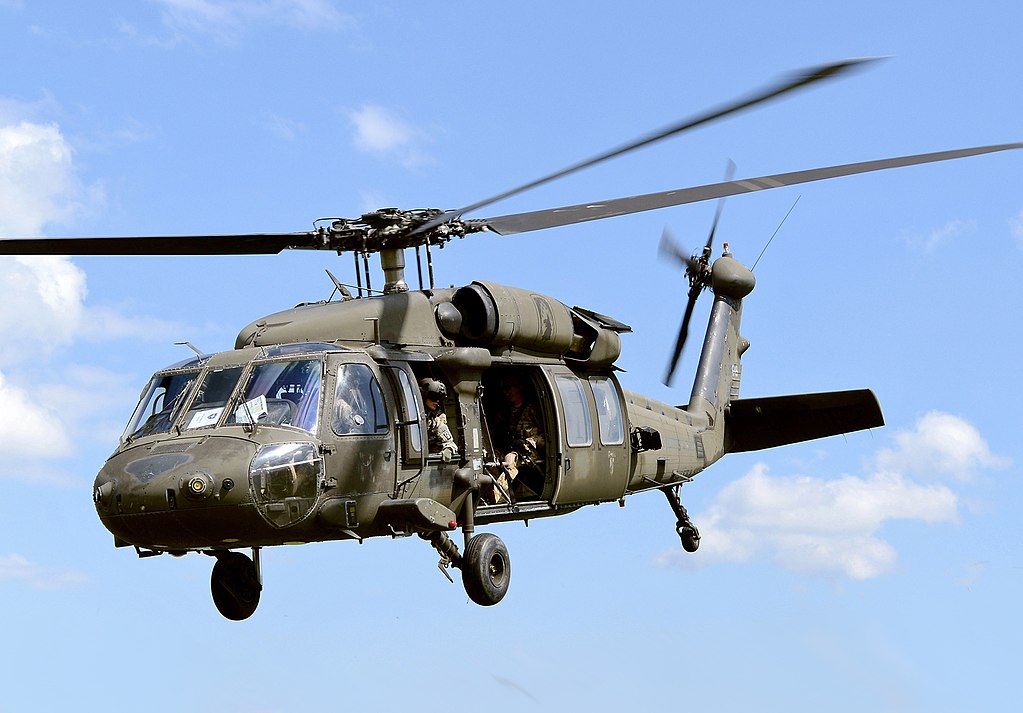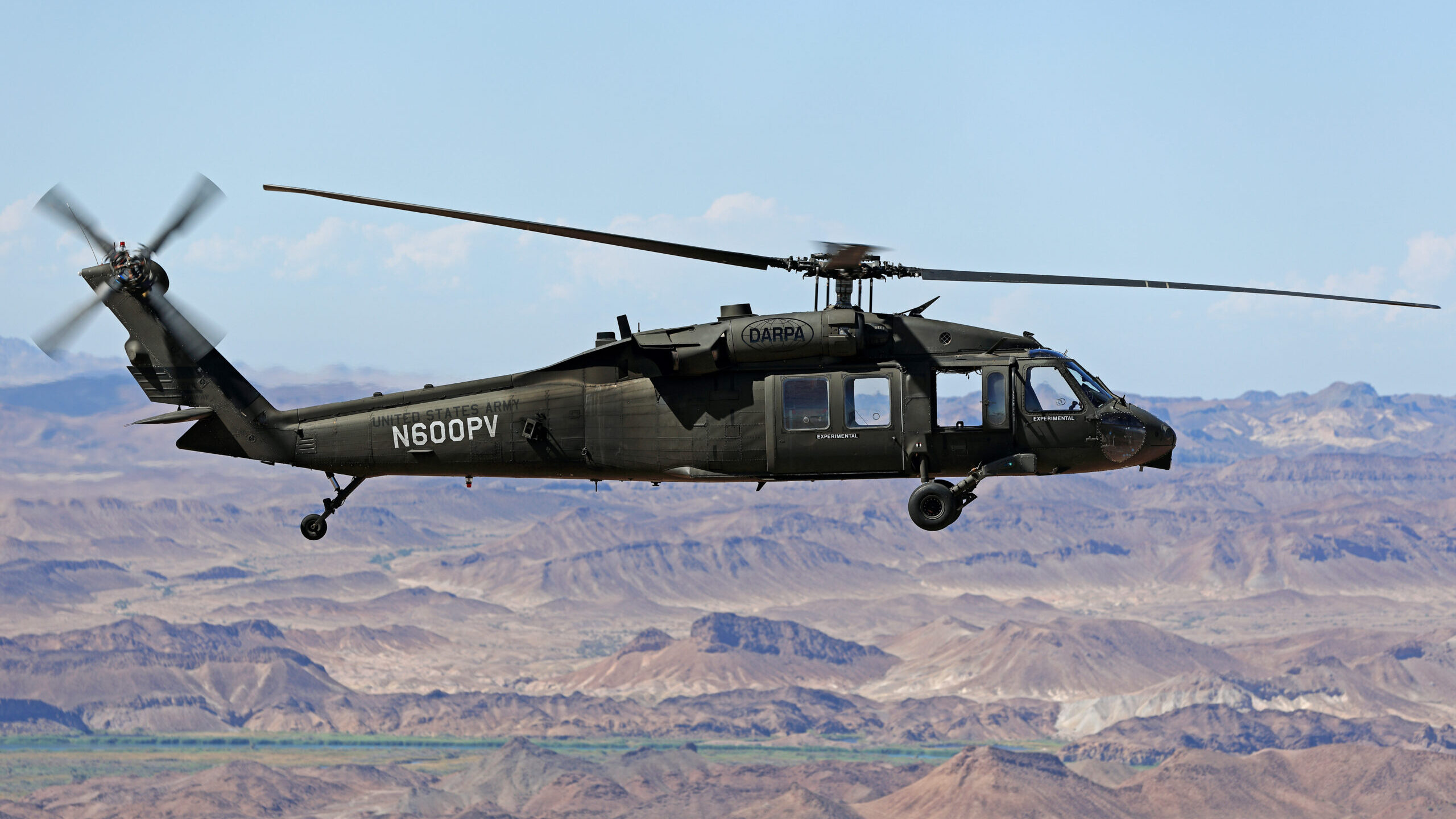The UH 60: A Check into Its Function in Modern-Day Armed Force Missions
The UH 60: A Check into Its Function in Modern-Day Armed Force Missions
Blog Article
UH-60: Innovations in Modern Helicopter Style
The UH-60 helicopter stands as a criteria in contemporary aeronautics, showcasing significant developments in style and modern technology that satisfy the evolving needs of military operations. Its unification of innovative products not just improves performance yet likewise addresses vital security concerns. Furthermore, the assimilation of advanced avionics has changed operational capabilities, allowing for better situational understanding and decision-making effectiveness. As we discover the advancement and vital advancements of the UH-60, it ends up being vital to think about exactly how these growths influence not only present applications however also the future landscape of helicopter design.

Evolution of the UH-60
The development of the UH-60 Black Hawk helicopter represents a considerable turning point in aerospace engineering and armed forces aviation. Introduced in the late 1970s, the UH-60 was developed by Sikorsky Aircraft to satisfy the USA Military's demand for a versatile utility helicopter efficient in executing a variety of missions. Its layout stressed ability to move, durability, and speed, establishing brand-new criteria for operational efficiency.
The UH-60 features a distinct four-blade rotor system, which boosts lift and stability, permitting it to operate successfully in diverse atmospheres. Its airframe is constructed from sophisticated composite products, contributing to a decrease in weight while maintaining architectural integrity. The helicopter's style additionally integrates better aerodynamics, which boosts fuel effectiveness and increases array.
Over the years, the Black Hawk has undertaken several upgrades to improve its capabilities, consisting of boosted engines, advanced trip control systems, and modular systems for very easy upkeep and versatility. The helicopter's capacity to carry out objectives varying from army transport to clinical emptying has strengthened its function as a foundation of U.S. armed forces procedures. The UH-60 Black Hawk remains an archetype of just how innovation in helicopter style can significantly affect army performance and functional flexibility.
Advanced Avionics Solutions
Innovations in avionics systems have actually changed the abilities of modern-day helicopters like the UH-60 Black Hawk, improving functional performance and situational recognition (UH 60). The assimilation of advanced avionics enables boosted navigating, interaction, and trip monitoring, making the UH-60 more flexible in varied mission profiles
One of the crucial features is the sophisticated electronic cabin, which employs multifunction screens that offer real-time information, ensuring pilots have instant accessibility to crucial flight info. This streamlining of info minimizes pilot workload and enhances decision-making processes during facility procedures. In addition, the unification of general practitioner and inertial navigating systems makes it possible for precise positioning and route preparation, enhancing objective execution in difficult atmospheres.
Furthermore, advanced avionics systems improve communication capabilities through safe and secure information web links and voice communication systems, allowing smooth control with ground forces and other aircraft. The integration of automated trip control systems further adds to enhanced stability and control, specifically in damaging weather or throughout low-altitude maneuvers.
Engine and Efficiency Enhancements
Engine efficiency in modern-day helicopters has actually taken a significant leap ahead, driven by technologies that boost power, integrity, and performance. The UH-60 Black Hawk, for circumstances, makes use of the T700-GE-701C engine, which includes a dual-channel, full-authority electronic engine control system.
In addition, the integration of engine health tracking systems permits real-time diagnostics and anticipating upkeep, dramatically enhancing functional dependability. These systems not only alert teams to prospective problems before they become vital however likewise assist in a lot more reliable upkeep organizing, consequently minimizing downtime.

Materials and Structural Innovations
Recent growths in products and structural style have actually transformed modern-day helicopter construction, improving both efficiency and resilience. The intro of sophisticated composite products, such as carbon fiber reinforced polymers, has substantially reduced weight while maintaining architectural honesty. This change not just improves gas effectiveness yet additionally increases payload ability, allowing helicopters like the UH-60 to do even more diverse missions.
Furthermore, advancements in aluminum alloys and titanium elements why not look here have added to enhanced resistance to corrosion and fatigue, expanding the life expectancy of important airframe components. The critical use these products has actually caused a decrease in maintenance demands and enhanced general operational readiness.

Additionally, the combination of computer-aided design (CAD) and additive production modern technologies has allowed much more lightweight frameworks and complicated geometries, optimizing the wind resistant efficiency of helicopter styles. These advancements facilitate rapid prototyping and manufacturing, allowing makers to respond quickly to evolving objective demands.
Security and Survivability Attributes
Security and survivability attributes in modern helicopter style have actually come to be vital, reflecting the increasing demands for mission performance in difficult settings. The UH-60 Black Hawk, a noteworthy instance, incorporates advanced innovations to improve staff and passenger protection. One of one of the most essential developments is the consolidation of crashworthy gas systems made to minimize the risk of fire during effect. In addition, the airframe is created with reinforced materials that dissipate and absorb energy, additional shielding residents in the event of a collision.
The helicopter also utilizes a ballistic protection system, that includes armored staff seats and vital systems shielding, decreasing vulnerability to little arms fire and shrapnel. Improved situational understanding is accomplished with sophisticated avionics and sensing unit innovations, enabling pilots to find and stay clear of hazards effectively.
Furthermore, the combination my response of redundancy in essential systems-- such as twin engines and numerous trip control networks-- makes sure ongoing operation even if one system fails. The UH-60 is furnished with sophisticated emergency flotation protection gadgets, enhancing survivability in water touchdowns. Collectively, these features not just enhance the safety of employees yet likewise increase goal success rates in aggressive atmospheres, demonstrating the dedication to excellence in helicopter layout.
Final Thought
The UH-60 helicopter stands for a considerable advancement in contemporary aeronautics technology, including innovative products, cutting-edge avionics, and robust safety and security features. Generally, the UH-60 serves as a standard for future developments in helicopter style, personifying resilience and adaptability in modern military operations.
The UH-60 helicopter stands as a criteria in contemporary aeronautics, showcasing substantial developments in style and modern technology that provide to the evolving demands of armed forces operations. As we check out the advancement and vital technologies of the UH-60, it becomes vital to think about just how these growths affect not just existing applications yet additionally the future landscape of helicopter layout.
Presented in the late 1970s, the UH-60 was made by Sikorsky Airplane to fulfill the United States Military's demand for a functional utility helicopter capable of performing a variety of missions. The UH-60 Black Hawk remains a prime example of exactly how advancement in helicopter layout can dramatically impact military effectiveness and operational adaptability.
On the whole, the UH-60 offers as a criteria for future growths in helicopter layout, personifying durability and flexibility in modern military operations.
Report this page